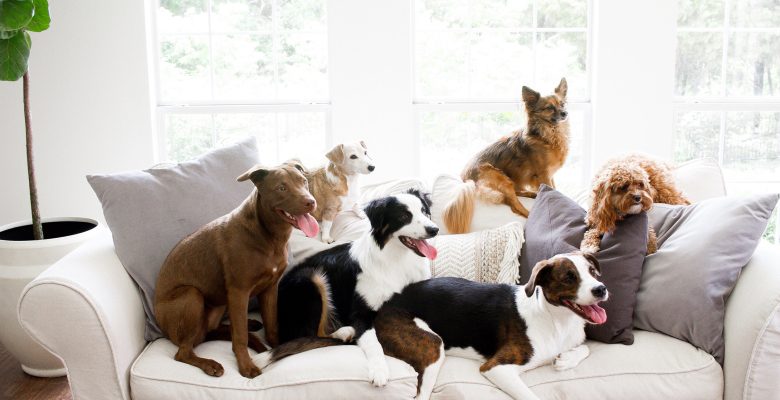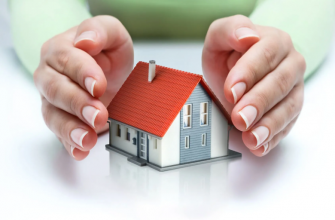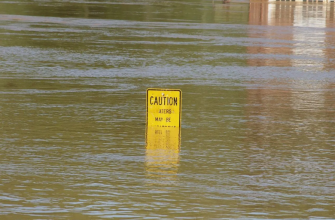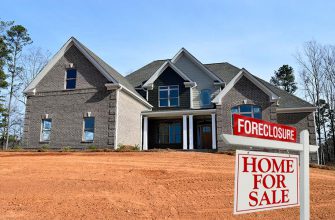If you’re a dog owner, you know that keeping your furry friend safe and comfortable at home is a top priority. Dogs are curious creatures, and their playful nature can sometimes lead to unintended consequences such as chewing on furniture or getting into potentially hazardous materials.
To ensure the safety of your home and your dog, it’s important to take steps towards dog proofing your living space. In this article, we will explore essential tips and strategies for creating a safe environment for your furry friend and protecting your home from any potential damage caused by your pet. By following these simple steps, you can provide a secure living area for both you and your dog.
- Understanding Your Dog’s Behavior and Needs
- Common Dog Behaviors
- Addressing Dog Behaviors Within Your Home
- Securing Your Home’s Indoor Spaces
- Protecting Your Furniture and Belongings
- Using Deterrent Sprays
- Providing Appropriate Chew Toys
- Using Furniture Covers
- Outdoor Safety Measures
- Creating a Dog-Friendly Environment
- Provide Proper Bedding
- Establish a Routine
- Create Designated Play and Rest Areas
- Preventing Accidents and Injuries
- Keeping Harmful Objects Out of Reach
- Securing Electrical Cords
- Preventing Access to Hazardous Areas
- Common Household Hazards for Dogs
- Maintaining a Clean and Hygienic Home
- Training and Behavioral Management
- Conclusion
Understanding Your Dog’s Behavior and Needs
Before you start dog proofing your home, it’s essential to understand your furry friend’s behavior and needs. A well-behaved dog is a happy dog, and a happy dog means a peaceful home. Knowing how to address common dog behaviors can help you create a safe environment for your pet and protect your home from potential damage.
Common Dog Behaviors
Dogs are social animals that require companionship and stimulation. They display their emotions in many ways, including barking, jumping, digging, and chewing. Understanding the reasons behind these behaviors and finding ways to redirect them can make all the difference.
- Barking: Dogs bark for many reasons, such as alerting their owners or expressing their anxiety. To manage excessive barking, give your dog enough attention and exercise, and consider using positive reinforcements such as treats.
- Jumping: Jumping up is a natural dog behavior, but it can be an issue if you have visitors or small children. To prevent your dog from damaging clothes or causing injuries, train them to stay calm and greet others politely.
- Digging: Digging is a common dog behavior that can damage your garden or cause accidents. To address excessive digging, give your dog enough exercise and consider providing a designated digging area in your yard.
- Chewing: Dogs love to chew, which can result in damaged furniture, shoes, or other objects in your home. Providing appropriate chew toys and positive reinforcement techniques can help address this behavior.
Addressing Dog Behaviors Within Your Home
Addressing behavioral issues starts with understanding your dog’s needs and providing appropriate care and attention. Here are some tips to help prevent potential damage caused by common dog behaviors:
“Dogs are amazing pets, but they require dedication and effort to keep them happy and healthy. A little investment in training and understanding can go a long way in preventing potential accidents and damage within your home.”
- Train your dog consistently to promote positive behavior and reinforce limits and boundaries. Positive reinforcement techniques such as treats, praise and petting can help incentivize good behavior.
- Provide enough exercise and stimulation to help keep your dog calm and happy. A bored dog can engage in destructive behavior, such as chewing or digging. Keep your dog busy with toys or playtime.
- Disincentivize negative behavior by removing access to areas where he or she has shown signs of destructive behavior.
Understanding your dog’s behavior and needs is essential to creating a safe environment for both you and your furry friend. Be patient and consistent in your training, and provide appropriate care and attention, and you will enjoy a happy and well-behaved dog in your home.
Securing Your Home’s Indoor Spaces
When dog proofing your home, securing the indoor spaces is a crucial step in creating a safe environment for your furry friend. Here are some specific ways to pet-proof your home:
| Action | Explanation |
|---|---|
| Close doors and cabinets properly | Ensure hazardous items such as chemicals and medications are not accessible to your furry friend. Keep cabinets locked or use child safety locks if your dog can easily open them. |
| Use designated dog-friendly areas | Designate specific areas in your home where your dog can play and relax. This will help minimize potential hazards in other areas of your home. |
| Remove toxic plants and chemicals from reach | Many common household plants and chemicals can be toxic to dogs if ingested. Keep these items safely out of reach or remove them entirely from your home. |
By implementing these measures, you can minimize potential hazards and create a truly dog-friendly environment in your home.
Protecting Your Furniture and Belongings
Dogs are lovable creatures, but they can also be destructive at times. One of the biggest challenges pet owners face is how to protect their furniture and belongings from dog damage. In this section, we’ll discuss some effective strategies to help you dog-proof your furniture and keep your belongings safe.
Using Deterrent Sprays
One of the most effective ways to protect your furniture is by using deterrent sprays. These sprays have a scent that dogs dislike, which makes them less likely to chew or scratch your furniture. Just spray a small amount on the areas your dog typically targets and keep reinforcing this behavior over time. This can help dogs lose interest in your furniture thereby preventing unwanted damage.
Providing Appropriate Chew Toys
Dogs have an innate urge to chew, which is why it’s essential to provide them with appropriate chew toys. By doing so, you’ll give your furry friend an outlet for their chewing needs, thereby reducing the likelihood of them targeting your furniture. Choose chew toys that are fully digestible and have a good taste to them which will encourage your dog to chew these instead of table legs or chair corners.
Using Furniture Covers
If you’re finding it challenging to train your dog, using furniture covers can be a great interim solution. These covers can protect your furniture when you’re not around to supervise your dog. Once your dog has been trained and stops targeting your furniture, you can remove these covers, and the furniture will look as good as new.
By following these strategies, you can prevent dog damage to your furniture and belongings, keeping your home looking great at all times.
Outdoor Safety Measures
As a responsible pet owner, it’s essential to ensure your outdoor space is safe for your furry friend. Here are some outdoor safety measures to help you secure your home for dogs and safeguard your home:
- Securing fences: Make sure your fence is high enough to prevent your dog from jumping over it, and there are no gaps or holes that your dog can slip through. It’s best to have a fence that is at least six feet high for large dogs and four feet high for smaller breeds.
- Removing toxic plants: Dogs are curious creatures and may nibble on plants, so it’s important to remove any poisonous plants from your yard. Some common plants toxic to dogs include azaleas, lilies, and daffodils.
- Providing adequate shade and water: Dogs can easily become dehydrated, especially during hot weather. Make sure your dog has access to clean, fresh water at all times and creates a shaded area in your yard where your dog can rest and keep cool.
By implementing these outdoor safety measures, you can create a secure and dog-friendly outdoor environment that allows your furry friend to enjoy the outdoors safely.
Creating a Dog-Friendly Environment
Dogs are beloved members of the family, and providing them with a safe, comfortable home environment is essential to their well-being. By implementing the following dog-friendly home strategies, you can create a happy and stress-free living space for your furry friend.
Provide Proper Bedding
Just like humans, dogs require a comfortable place to sleep. Ensure your furry friend has a dedicated space to rest with a comfortable bed that suits their size and sleeping style. Consider adding soft blankets or pillows to further enhance their comfort.
Establish a Routine
Creating a routine can help your dog feel safe and secure in their surroundings. Set specific meal and playtime schedules, and take them for regular walks at the same times each day. Consistency is key to minimizing potential anxiety or stress in your furry friend.
Create Designated Play and Rest Areas
Designate specific areas for your dog to play and rest. This can include a small playpen or designated play area. Providing these separate spaces can help lessen potential conflicts with other pets or family members and create a sense of autonomy for your dog.
By implementing these dog-friendly home strategies, you can create an environment where your dog feels safe and at home.
Preventing Accidents and Injuries
When it comes to protecting your furry friend, preventing accidents and injuries should be a top priority. Taking proactive measures can create a safer home environment for both you and your dog.
Keeping Harmful Objects Out of Reach
Dogs are naturally curious and love to explore their environment with their mouth. Unfortunately, this means they may come into contact with harmful objects or substances. To prevent this, keep any medications, cleaning supplies, and poisonous plants locked away or out of reach of your dog.
Securing Electrical Cords
Exposed electrical cords and wires can be a major hazard for dogs who may chew on them or get tangled up. To keep your dog safe, secure any electrical cords out of reach or conceal them inside cord covers.
Preventing Access to Hazardous Areas
If you have hazardous areas in your home such as a pool or fireplace, block off access to them with gates or covers. Similarly, keep your dog away from areas with sharp objects or tools which can cause harm.
Common Household Hazards for Dogs
| Hazardous Item | Preventative Measures |
|---|---|
| Medications and Vitamins | Store in a locked cabinet or high up out of reach |
| Cleaning Supplies | Store in a locked cabinet or high up out of reach |
| Electrical Cords and Wires | Secure out of reach and conceal with cord covers |
| Pool Area | Block off access with a gate or cover |
| Fireplace | Block off access with a gate or cover |
By being aware of these common household hazards and taking preventative measures, you can help ensure your dog’s safety at home.
Maintaining a Clean and Hygienic Home
When you have a pet in your home, it’s essential to maintain cleanliness and hygiene to protect your home from pet damage and create a safe living space for you and your furry friend. Here are some tips for keeping your home clean:
- Regular grooming: Grooming your pet regularly can help prevent shedding, fur matting, and odor buildup. Brush your pet’s fur, clean their paws after walks, and bathe them as needed.
- Proper waste disposal: Dispose of pet waste correctly, and don’t leave it lying around your home or yard. Consider investing in a waste disposal system to make this process more convenient.
- Pet-friendly cleaning products: Use cleaning products that are safe for pets and avoid those that contain harmful chemicals. You can also make your cleaning solutions using natural ingredients like baking soda and vinegar.
By following these simple cleaning tips, you can keep your home looking and smelling fresh and minimize any damage caused by your pet.
Training and Behavioral Management
When it comes to dog proofing your home, training and behavioral management are essential. By investing time and effort into these areas, you can foster a positive and well-behaved dog within your home.
To start, consider enrolling your furry friend in obedience classes or working with a professional dog trainer. These experts can help you teach your dog basic commands and establish clear boundaries around your home. Through consistent training, your dog will understand what is expected of them and behave accordingly.
Another important aspect of training is socialization. Take your dog on regular walks and introduce them to other dogs and people. This will help them learn appropriate behavior and become more comfortable in different environments.
In addition to training, proper behavioral management is crucial. This includes things like providing appropriate toys and chew items to prevent destructive behavior, crate training to establish a safe space for your dog, and addressing any aggression or anxiety issues through positive reinforcement and behavior modification techniques.
Remember, every dog is unique and may require different training and management strategies. By working with a professional and remaining patient and consistent, you can create a safe and happy home environment for both you and your furry friend.
Conclusion
In conclusion, making your home dog proof requires a combination of understanding your dog’s behavior and needs, securing indoor and outdoor spaces, protecting your furniture and belongings, preventing accidents and injuries, maintaining a clean home, and providing proper training and behavioral management. By implementing these strategies, you can successfully create a safe and dog-friendly environment for your furry friend.
Remember to always be proactive and anticipate potential hazards, such as toxic plants or hazardous areas. Regular maintenance, such as grooming and waste disposal, can also help minimize any damage caused by your pet. With patience, effort, and dedication, you can ensure a harmonious and safe living space for both you and your furry friend.









